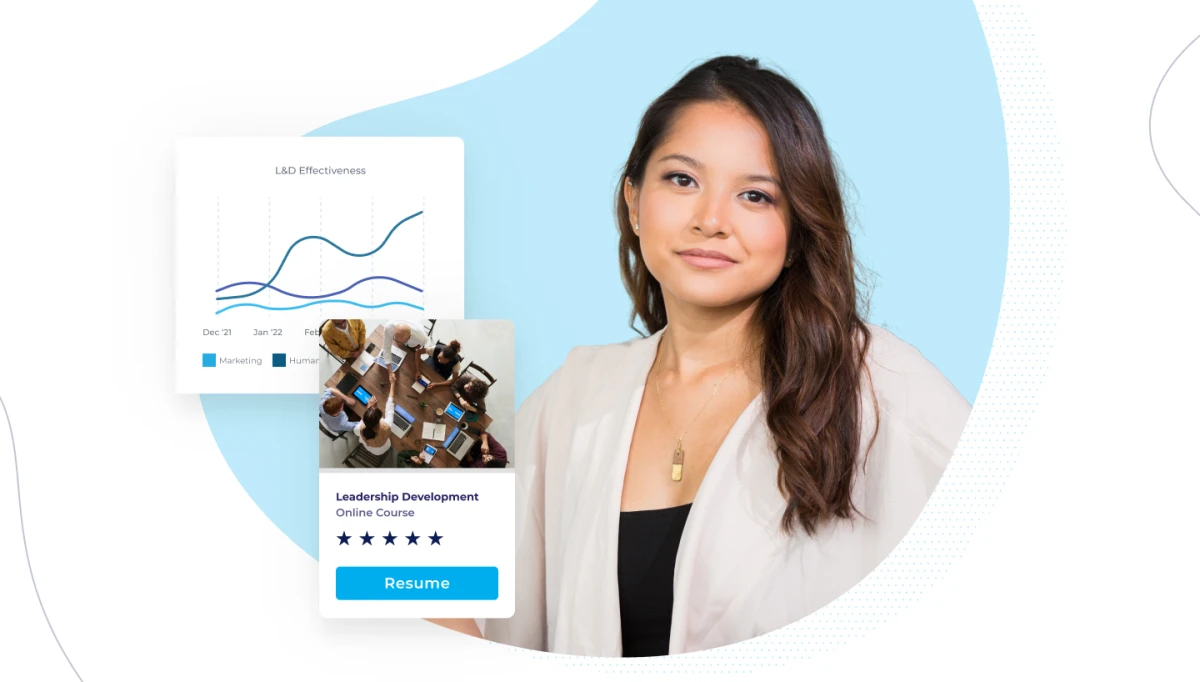When it comes to the most effective learning and development programs best practices, looking ahead is key. But the COVID-19 pandemic has revealed just how difficult it can be to predict the future of business. Therefore, it's absolutely critical that you make a plan with inherent flexibility to keep your business moving toward its north star. You can keep individual learners on a clear path forward by addressing present, near future and long-term planning needs—even as business landscapes shift.
Learning and development to take on change
A Deloitte survey found that nearly half of their CEO respondents count a "lack of processes to identify and move employees" among the top three obstacles to internal talent mobility. In order to create forward-looking L&D, you need an LMS with robust analytics reporting to track learner participation and progress.
Strategic planning is a crucial prerequisite to create a plan that serves the present, near future and long-term needs of your learners. Developing a clear picture of the future state and integrating the LMS with human resources information management can urge learners forward.
Present-day learning
Learning for current skills should be tailored to the individual learner. Engaging learners with content that meets their present-day needs can be a gateway into deeper L&D engagement.
An LMS can create relevant learner experiences by making learning a part of work activities. Effective learning and development programs best practices include connecting the LMS to line-of-business apps for learning in the flow of work.
For example, you can highlight opportunities and strategies for upselling and cross selling with in-portal course suggestions when you integrate Salesforce with your LMS. This enables your team members to enhance their knowledge without navigating away from the application, thereby delivering greater value to the business and keeping learners on track.
Near-future learning
Learning programs that target certain skills should prepare learners to assume new responsibilities in the not-so-distant future. Then, learners can build confidence in their new skills when activities lead to valuable feedback from instructors or other learners.
Using LMS features that provide continuous updates on a learner's progress or performance make for a more interactive experience. Make learning content, such as videos, courses and webinars, easy to find by storing it in the LMS. Plus, tap a system with simple navigation and a welcoming user interface so learners will want to come back for more learning and resources.
Long-term learning
Sharing your brand vision for skill development can help learners understand the context for strategic skill development. Transparency can accelerate upskilling by mapping strategic skills to real opportunities and goals.
It's a best practice to combine future-focused upskilling with present-day opportunities to apply new skills. For instance, CENGN powered up high-tech learning with blended learning assessment strategies.
"Learners ... may also be required to write and upload small computer programs or configuration files," says CENGN's Senior Training Manager Peter Heath. CENGN uses Absorb to provide checkpoints for one-to-one validation at the end of eLearning courses.
Skill is the key element that moves organizations forward. But future skill requirements are approaching quickly, so your LMS needs to empower you to look ahead and support varied learning in the present, near future and long-term future.
Sign up for a live demo to learn how Absorb LMS can empower your learners today, while preparing them for tomorrow.





